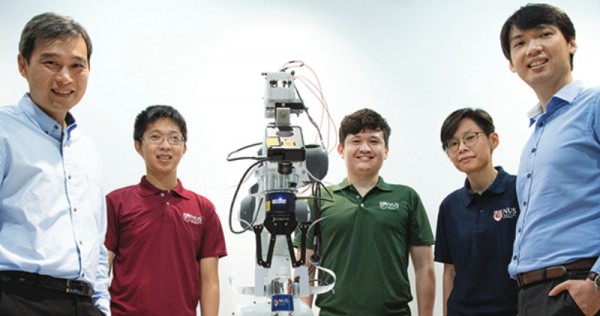[ad_1]
Season 3 of Westworld may have featured many Singapore landmarks in a fictitious setting, but new research by NUS scientists may bring the world of human-like robots into real-life sooner than we expect. And it might very well be powered by Intel inside.
Assistant Professor Harold Soh (top photo, left) and Assistant Professor Benjamin Tee (top photo, right), together with their team of researchers, have successfully developed artificial skin that can detect touch more than 1,000 times faster than the human sensory nervous system and identify the shape, texture, and hardness of objects 10 times faster than the blink of an eye.
In their initial experiment, the researchers used a robotic hand-fitted with the artificial skin to read Braille, passing the tactile data to Intel’s Loihi neuromorphic computing chip through the cloud to convert the micro bumps felt by the hand into a semantic meaning.
Loihi achieved over 92 per cent accuracy in classifying the Braille letters, while using 20 times less power than a standard processor.
[ad_2]
Source link






